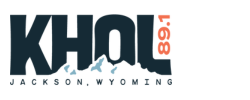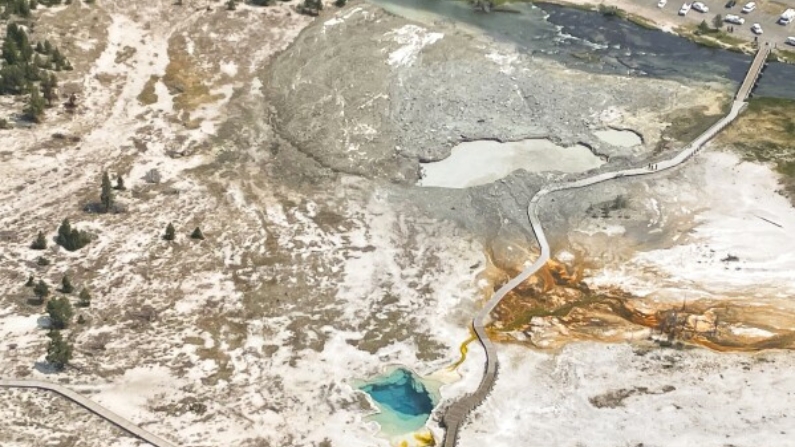After a hydrothermal explosion in Yellowstone National Park sent tourists running from steam and muddy debris on July 23, the park has closed the area around Biscuit Basin for the rest of the season.
The burst reached hundreds of feet into the air, destroying a nearby boardwalk and ejecting grapefruit-sized rocks tens to hundreds of feet away. Larger blocks weighing hundreds of pounds were found closer to the explosion site.

A hydrothermal explosion in Biscuit Basin destroyed part of the boardwalk system. (NPS / Jacob W. Frank)
“These explosions can be very powerful, drive a lot of debris that shoots out of the explosion and then it falls, rains out,” said Michael Poland, scientist in charge of the Yellowstone Volcano Observatory. “Those kinds of rocks were at one point part of the geyser conduit and now they’re spread all over the area, including the boardwalk.”
The explosion affected Black Diamond Pool and Black Opal Pool in Biscuit Basin.
A preliminary assessment found the shape of Black Diamond Pool has changed somewhat following the explosion, which was caused by a sudden transition of water into steam in the so-called shallow plumbing systems beneath hot springs and geysers – not by volcanic activity.
“Obviously, there’s going to be all kinds of folks online that are claiming the volcano is about to erupt, but this sort of thing, as spectacular as it is, is relatively small,” Poland said. “Some of these hydrothermal explosion[s] that have occurred in the past few thousand years in Yellowstone have left craters that are hundreds of feet across. The biggest one is a mile and a half across. Those are big hydrothermal events and even though those aren’t related to volcanism.”
Black Diamond Pool continued roiling and spouting Tuesday. By Wednesday, it and Black Opal Pool overflowed, sending murky water into the nearby Firehole River, though no water bursts were seen in the morning. Small explosions of boiling water in the area may continue for days or even months.
Poland said earthquakes can cause hydrothermal explosions like this one but adds that’s not what happened in Biscuit Basin.
“It’s more likely to be associated with local changes in this particular system’s plumbing. Perhaps there’s some minerals that were sort of precipitating out, clogging things and that sort of forces pressure to build in certain areas in ways that might not be normal. And then eventually that reaches a breaking point and you’ll get an explosion like this,” he said.
Hydrothermal explosions typically happen a few times a year in the park, though many are in the backcountry and not immediately noticed.

An aerial shows areas impacted by the hydrothermal explosion in Biscuit Basin. The area is closed for the rest of the 2024 summer season. (Yellowstone National Park)
“Similar, although smaller, hydrothermal explosions took place in 1989 at Porkchop Geyser in Norris Geyser Basin, and on April 15, 2024, from the Porcelain Terrace Area of Norris Geyser Basin. A small hydrothermal explosion occurred from Wall Pool, in Biscuit Basin, in 2009. Significant hydrothermal explosions, probably similar in size to that of July 23, 2024, occurred in the 1880s at Excelsior Geyser, in Midway Geyser Basin,” reads a park press release.
While Biscuit Basin is closed for the season, Grand Loop is open to cars and nearby thermal basins, like Black Sand Basin, are open.






